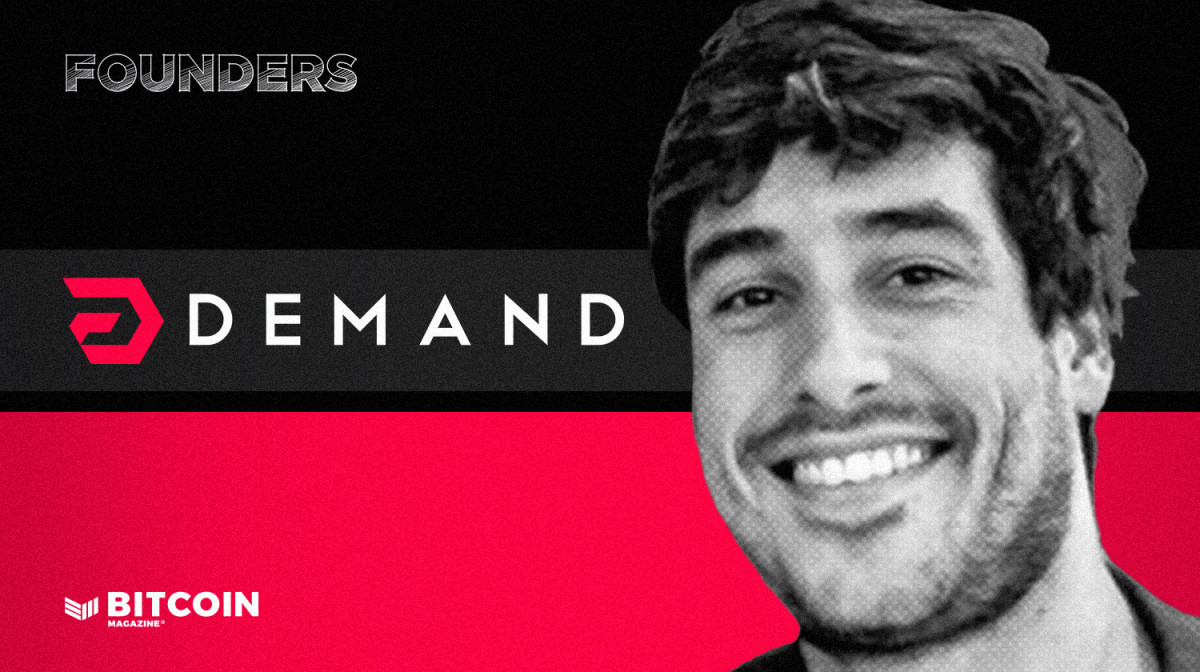DEMAND Pool’s CEO says now is the time to decentralize Bitcoin mining.


Company’s name: demand
Founder: Alejandro de la Torre and Filippo Merli
Establishment date: 2023
Headquarters location: Lisbon, Portugal and Florence, Italy
Amount of Bitcoin in Treasury: “Currently bootstrapped”
Number of Employees: 2
Website: https://www.dmnd.work/
Public or private? private
Alejandro De La Torre is deeply concerned that Bitcoin mining is too centralized, and he is on a mission to change that. That’s why he launched DEMAND, a Bitcoin mining pool that puts power back in the hands of independent Bitcoin miners.
But before we get into how DEMAND works, it’s important to understand what De La Torre learned from the Bitcoin mining industry to better understand what motivated him to start DEMAND.
De La Torre’s History in the Bitcoin Mining Space
De La Torre served as Vice President of Poolin, one of the world’s largest Bitcoin and cryptocurrency mining pools, and Vice President of Business Operations at BTC.com, which operates its own Bitcoin mining pool. What he saw while serving in these two roles made him realize that there was little time to waste in decentralizing the Bitcoin mining environment.
“My experience at my last mining farm made me realize that the mining industry needs to change, and it needs to change very quickly,” De La Torre told Bitcoin Magazine. “There is a very clear problem with the centralization of mining pools today, and working at BTC.com and Poolin has allowed me to pinpoint that problem.”
De La Torre went on to explain how many Bitcoin mining pools are proxies for a larger pool (Antpool) and explained that this centralization has the power to seriously damage Bitcoin.
“The anchor pool is currently close to 50% of the network. This allows for a 51% attack on the network, which would be disastrous,” De La Torre said.
“I don’t think they will, but the possibility exists and that’s already a big red flag,” he added.
De La Torre also pointed out that this level of centralization could pose risks when it comes to network censorship, emphasizing that it would not be difficult for this major pool to censor half of the transactions on the Bitcoin network.
According to De La Torre, censorship and the possibility of 51% attacks are “very clear and present risks in Bitcoin right now.”
Powering a solo miner
In response, De La Torre and his business partner Felippo Merli launched DEMAND Pool in November 2023 with the intention of returning power to the hands of solo miners.
DEMAND is the world’s first Stratum V2 mining pool. Stratum V2 is an open source messaging protocol that allows miners and pools to communicate directly with each other, reducing mining infrastructure requirements compared to previous iterations and allowing individual miners to choose their own mining template. The latter feature is one of the key features that differentiates Stratum V2 from other mining pool protocols.
“Today, pools are responsible for building blocks and adding transactions to blocks,” De La Torre said. “Stratum V2 with DEMAND allows miners to build blocks themselves and add transactions of their choice.”
Most filtering in mining pools today is performed at the pool level rather than the individual miner level. De La Torre understands that miners want more control over the types of transactions they include in their blocks, especially with the introduction of protocols like Ordinals and Runes. And De La Torre believes miners should have this power. Because this adds to the spirit of decentralization.
“This gives me less power. That’s what I want. I don’t want power. I gave it my all,” De La Torre said. “We’ve had it before, too much power in too few hands. And it’s not Bitcoin. Bitcoin is decentralization, and this is driving that further.”
In an effort to help miners filter, DEMAND has created a set of mining templates that miners can easily use for their work.
Incentives provided to solo miners
De La Torre knows that the chances of mining a block are low compared to small individual miners, but he believes that finding a block should not be a given, and he has also created other ways to encourage individual miners to get online.
“You have to heat your house in the winter, right? “What if we use a Bitcoin miner as a heater?” de la Torre said.
“If I’m lucky, I might hit a dead end and make my wife very happy,” he added with a laugh.
Solo miners participating in the DEMAND pool will also have the option to earn income for their efforts by selling the hashrate they produce on the market. DEMAND has signed an agreement with hashrate marketplace Rigly and plans to build more partnerships.
De La Torre also mentioned how DEMAND payments are made through the Pay Per Last N Share (PPLNS) system. With PPLNS, revenue is allocated based on the number of blocks a mining pool mines per day, with payouts fluctuating depending on the pool’s luck in mining blocks.
This system is different from the Fee Pay Per Share (FPPS) system commonly used by major mining pools. With FPPS, miners charge a service fee based on their theoretical profits, and miners get paid whether the pool finds the block or not.
De La Torre recognizes that receiving a continuous salary through FPPS may sound attractive to miners, but he is quick to point out that salaries through PPLNS and FPPS are comparable over the long term.
“A lot of people have misconceptions about PPLNS,” De La Torre said.
“FPPS is fine because it provides ongoing payments. I understand why miners are looking for FPPS. However, the PPLNS average over sufficient time is almost identical,” he added.
“Yes, there will be no ongoing payouts, but there will be erroneous payouts based on the hash rate of the DEMAND and we plan to secure a good amount. You’ll still get consistent payouts, or they’ll be about the same on average. So there really is no downside.”
De La Torre also pointed out that solo mining as part of a DEMAND pool is one of the best ways for Bitcoin enthusiasts to get their hands on non-KYC Bitcoin.
He also highlighted the fact that the coming online of individual miners will do another thing essential to decentralizing Bitcoin: it will bring more nodes online.
Send Node
To use DEMAND’s block template, miners must run their own nodes. This means that individual miners contribute not only to the decentralization of Bitcoin’s hash rate, but also to the decentralization of its governance.
“We want the solo community and the home mining community to thrive and make more money, but we also want the node proliferation,” De La Torre said.
“Individual miners will provide hash rates to help secure the network, potentially create Bitcoin, and sustain Bitcoin Core or any Bitcoin client of your choice. Nodes are good for the health of the system,” he added.
Looking into the future
De La Torre also said that DEMAND is currently working to expand its services into collaborative mining and that DEMAND will actively seek out miners to participate.
He pledged to differentiate DEMAND from the “black box” pools on the market by making it a “stable and trustworthy pool with transparent payouts.”
De La Torre appears to be doing everything he can to bring more independent miners online, and in our conversation with him, the desperation was evident in his voice as he laid out his plans for DEMAND.
“The centralization of Bitcoin mining pools is becoming a very serious problem and it is up to us as the mining community to do something about it,” De La Torre said. “Otherwise it’s not good.”

